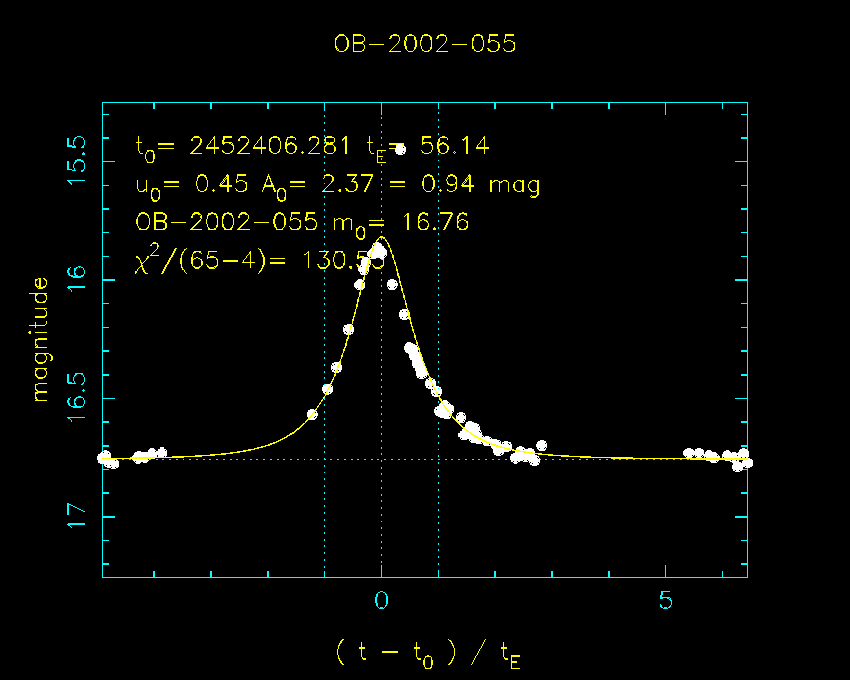
 ExoPlanet Discovery Space:
.pdf.
.ps.
In colour:
.pdf.
.ps.
ExoPlanet Discovery Space:
.pdf.
.ps.
In colour:
.pdf.
.ps.
REX is conceived as a UK-operated network of three 2-metre southern-hemisphere robotic telescopes that will be dedicated primarily to the discovery of extra-solar planets. The robotic telescopes will be distributed in longitude (e.g. in Chile, South Africa, and Australia) to enable 24-hour coverage of targets. The telescopes will be equipped with CCD imaging cameras for photometry and high-resolution spectrographs for high-precision radial velocity measurements.
Cool Exo-Planets by Robotic Monitoring of Gravitational Lensing Events
REX is designed to enable the UK to lead a search for
`cool' exo-planets with sensitivity to planet masses
as small as that of the Earth.
The primary aim is to rapidly explore the
`cool' zone (1-4AU) ,
where REX will measure the abundance of exo-planets
as a function of planet mass and orbit size.
If promptly funded, REX could discovery the first Earth-mass exo-planets
by 2007-8, or show that such planets are rare by 2010-11.
REX will search for cool exo-planets by intensive robotic monitoring of the lightcurves of 1000 galactic bulge microlensing events, during May-Sep of each year for 3-5 years. Gravitational lensing occurs when a background star is magnified by the gravity of an intervening lens star passing across the line of sight. As the lens star passes, the magnified background star is seen to dramatically brighten and then fade again, for a period of typically a few weeks. The OGLE-III experiment is currently discovering 400-500 such microlensing events every year, but the lightcurves are not yet being monitored thoroughly enough to exploit their potential for discovery of cool extra-solar planets. REX aims to remedy that.
REX will search for cool planets by intensively monitoring the lightcurves of 1000 gravitational lensing events. REX will detect planets near the lens stars that produce brief episodes of increased or decreased magnification. Such planet-lensing episodes last about a day for Jupiters or an hour for Earths. For planets in the `cool' lensing zone (1-4 AU), the probability that a given planet will reveal itself by producing a detectable planet-lensing episode is roughly 20% for Jupiters and 2% for Earths. Current observations (by OGLE, PLANET, MOA, and MicroFUN) show that planet-lensing events are probably being detected (e.g. OB-2002-055 ), but not yet monitored in sufficient detail to characterise the planet masses. Current results suggest that the abundance of cool Jupiters is approximately 20% (1 Jupiter per 5 lens stars). REX will intensify the monitoring in order to detect briefer lensing episodes produced by smaller planets, measuring the abundance of cool planets down to the mass of Earth. REX will use an observing strategy designed to maximize the planet discovery rate.
Robotic Radial Velocity Searches for Star-Wobble Exo-Planets
When not observing microlens events,
the REX spectrographs will be used to follow-up interesting transit
events and to follow-up promising planetary systems in the
pipeline from the Anglo-Australian Telescope, Magellan and the ESO 3.6-m
planet search projects. Apart from contributions to the
discovery of new single exo-planets, the high temporal sampling of
such a facility would enable the UK to become the primary discoverer of
new mulitple-planet systems.
The current generation of radial velocity projects have been extremely successful in detecting a rich variety of explanets, such as 51 Peg (Jupiter-like object in 4 day orbit), 55 Cancri d (Jupiter-like planet in 13 year orbit), HD49674b (30 Earth mass planet). Such surveys have also had success in finding a variety of multiple systems, however, the acquisition of such data are difficult. The detection of multiple planets requires large numbers of data points and benefits significantly from the ability to sample the signals at an appropriate rate. For example, the initial announcement of exoplanets generally takes around 20 points, however, the discovery of multiple planets requires a signal to be detected in the residuals of an initial fit. This requires extra data, in particular, at times when orbits go through points of inflexion. Such data are extremely awkward to acquire when using a common user telescope with a large number of targets, though for the efficient detection and characterisation of multiple planets this needs to be done routinely.
The ESA Eddington mission will be launched circa 2008-9, aiming to discover `hot' to `habitable' extra-solar planets that transit in front of their host stars. Many of the Eddington planet candidates will be mimics rather than true planets, e.g. brown dwarf eclipsing binaries. REX will give the UK an advantage in rapidly performing the follow-up observations needed to establish which of the Eddington candidates are true planets.